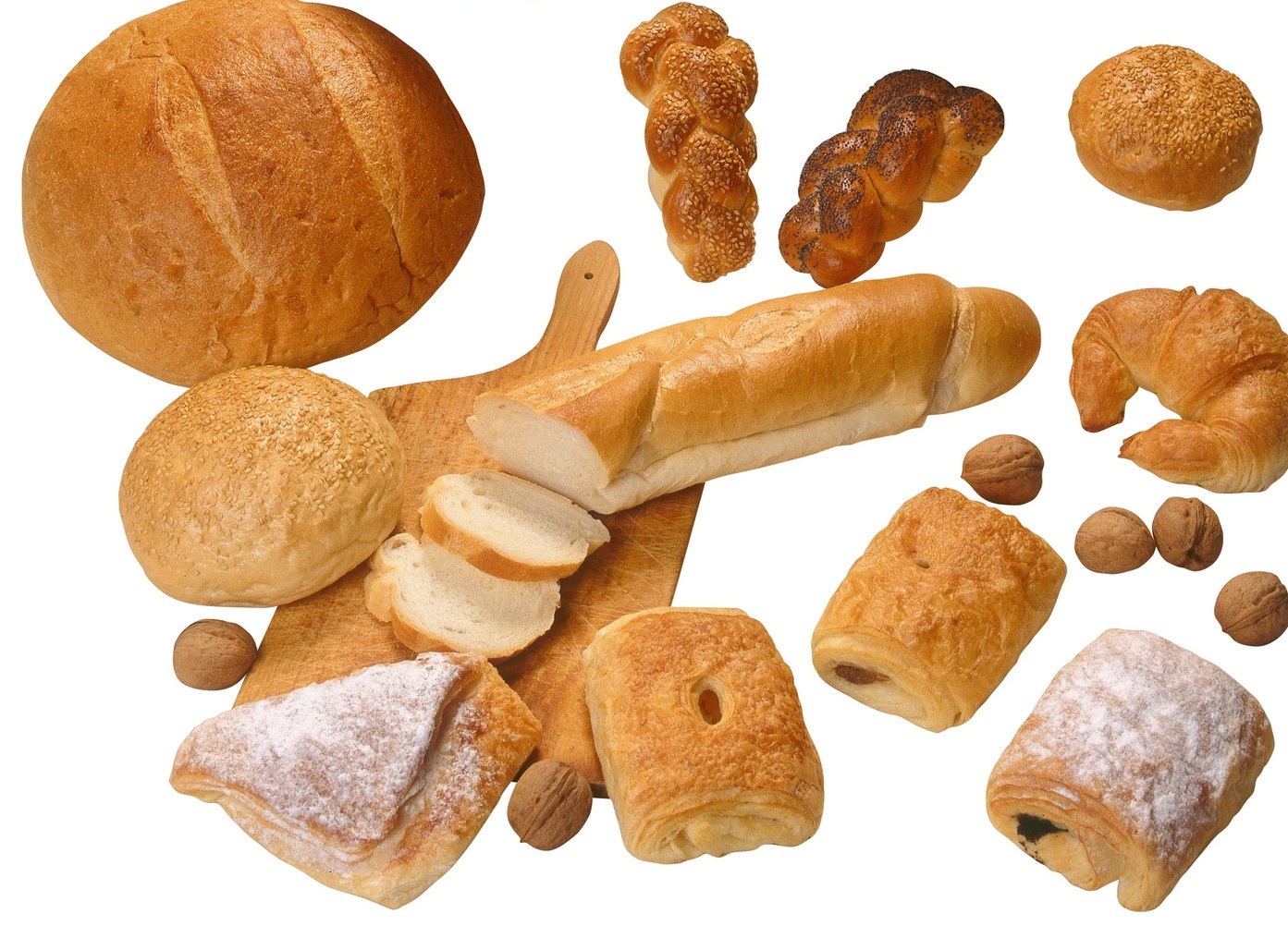cereal and Cereal products
Refrigerated doughs are susceptible to spoilage of species of the bacteria Lactobacillus and Leuconostoc that can grow at low temperatures (especially at 10°C and above) producing CO2 and causing the containers to blow. Wild yeast may also be present in low numbers. Breads usually have low moisture which prevent the growth of most bacteria but not of molds. Spores of the bacterium Bacillus subtilis can survive baking and can grow and produce “ropiness” (soft, stringy, brown mass with fruity odor). Mold spores are killed by baking but the bread is contaminated by spores from the air or equipment. A common mold is Rhizopus stolonifer.
Most pastries, due to the low water content, will only allow molds to grow. However, they can be spoiled by microorganisms found in icings, nuts, fillings, toppings, and creams added after baking. Some fillings with pH>4.0 and water activity (aw ) greater than 0.85 must be considered potentially hazardous and treated as perishable food ,i.e., they must be refrigerated.
Spoilage of Baked Goods
Mold is the most common kind of spoilage of this group of products. If the product is preserved, preservative-resistant molds (PRM) can cause spoilage. Some heat-resistant molds (HRM) spores can also survive the baking step.
Dry pastas do not support growth of microorganisms but fresh pastas can be spoiled by bacteria, yeasts, and molds. Several pasta products have been recalled due to the presence of Salmonella. Fresh egg noodles may have significant numbers of staphylococci and enteric streptococci. Enterotoxin production by S. aureus is a potential health hazard. This toxin will not be inactivated during cooking. Good sanitary practices are very important in the production of fresh pastas.
Cereal grains normally have only 10-12% moisture; however, during harvesting, processing, and storage this moisture can be higher and some molds can grow (Aspergillus, Penicillium, Cladosporium, Fusarium, Alternaria, and Rhizopus). Some molds such as Aspergillus flavus and A. parasiticus can grow during storage. These molds produce mycotoxins such as aflatoxins, and present a potential health hazards to consumers. External contaminants such as coliforms, E. coli, and enterococci may be contributed by birds, insects, and rodents. Storage conditions (moisture, temperature and time) are critical factors in controlling these microorganisms.
Flour may contain large quantities of microorganisms such as rope-forming spores as well as psychrotrophs, flat-sour organisms, thermophilic sporeformers, and molds such as Penicillium, Aspergillus, Cladosporium, Mucor, and Rhizopus. Soy flour is manufactured by a different procedure and has a higher moisture content than wheat flour. Salmonella spp. have been detected often in soy flour.
Ready-to-eat cereals, when properly processed and stored, do not support the growth of bacteria, yeasts or molds.
“Baked goods” refers to bread, cakes, pie shells, pastries, tortillas as well as fried dough products such as donuts (Deibel and Swanson, 2001, 2015). The baking or frying process destroys most of the microorganisms in baked goods. Post-baking contamination can result in spoilage of certain products if they are stored at ambient temperature for prolonged time. Mold is the most common spoilage microorganisms for these groups of food products. If the product is preserved, preservative-resistant molds (PRM) can cause spoilage. Some heat-resistant molds (HRM) spores can also survive the baking step. Sporeforming bacteria such as “rope bacteria” can also survive the baking step and cause “rope” spoilage. Propionates inhibit these bacteria.
Good manufacturing practices and good sanitation practices can control and even reduce the number of pathogenic and spoilage microorganisms in cereal grains and their products during processing and storage. Wet cleaning should be avoided whenever possible since it usually causes more problems than it solves due to an increase in moisture level. Rigid application of a Hazard Analysis Critical Control Point (HACCP) system is highly recommended.
The aerobic plate count, coliform count, and yeast and mold count are important indications of good sanitation, handling, processing, and storage practices. Other recommended tests for products such as pasta are: E. coli, staphylococci count and Salmonella test.
Recommended tests
Aerobic plate count.
Yeast and Molds count.
Preservative-resistant molds (PRY)
Heat-resistant molds (HRM)
Xerophilic mold count.
Total coliforms and E. coli.
Staphylococci.
Salmonella.
Additional tests
Rope spores (cereal grains and
flours).
Mycotoxins.
Staphylococcal enterotoxin.
Clostridium perfringens (in soy products).
Bacillus cereus (in rice)
Others: Psychrotrophs, thermophiles, anaerobes, flat sour spores, hydrogen sulfide producers, lactic acid producers, nitrate utilizing gas producers, sulfide spoilage spores
Adapted from
Deibel, K. E. and Swanson, K. M. 2015. Cereals and Cereal Products, chapter 55, p. 549. In F. P. Downes and K. Ito (eds.), Compendium of Methods for the Microbiological Examination of Foods. American Public Health Association, Washington, DC.

